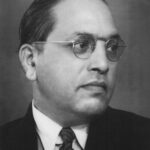
Introduction
5 Key Events That Led to India’s Independence
The story of India’s independence is not just about a date on the calendar; it is a saga of courage, sacrifice, and unwavering determination. After nearly 200 years of British colonial rule, India finally broke free on 15th August 1947. This journey was marked by significant movements, iconic leaders, and relentless struggles. Let’s take a walk through the key events and heroes that shaped modern India’s freedom.
The British Rule & The Spark of Revolt
The British East India Company came to India as traders in the early 1600s but soon took control over vast territories. By the 19th century, their oppressive policies, high taxes, and exploitation led to widespread resentment. The first major uprising against British rule occurred in 1857, known as the First War of Independence or Sepoy Mutiny. Although it was brutally suppressed, it laid the foundation for future revolts.
Key Events That Led to Independence
1. Partition of Bengal (1905) & Swadeshi Movement
The British divided Bengal, fueling communal tensions. In response, Indians launched the Swadeshi Movement, urging people to boycott British goods and support local industries.
2. Jallianwala Bagh Massacre (1919)
One of the darkest events in Indian history, this massacre saw General Dyer’s troops killing hundreds of peaceful protesters in Amritsar. The incident intensified the freedom movement and shook the nation’s conscience.
3. Non-Cooperation Movement (1920-1922)
Led by Mahatma Gandhi, this movement urged Indians to refuse to cooperate with the British administration by boycotting schools, offices, and foreign goods. Although it was called off after the Chauri Chaura incident, it showed the power of non-violent resistance.
4. Dandi March & Civil Disobedience (1930)
Gandhi’s Salt March (Dandi March) was a turning point in India’s struggle. Walking 240 miles to break the British salt monopoly, this act of civil disobedience inspired millions to defy British laws.
5. Quit India Movement (1942)
“Do or Die“—this was Gandhi’s call during the Quit India Movement, demanding an immediate end to British rule. The movement led to mass protests and brutal crackdowns, but it proved that Indians would settle for nothing less than complete freedom.
Heroes of India’s Independence
1. Mahatma Gandhi – The Father of the Nation
His principles of non-violence (Ahimsa) and truth (Satyagraha) became the foundation of the Indian independence struggle.

2. Subhas Chandra Bose – The Rebel Leader
Founder of the Indian National Army (INA), Bose’s slogan “Give me blood, and I will give you freedom!” inspired many to take up arms against British rule.

3. Bhagat Singh – The Fearless Revolutionary
Executed at just 23 years old, Bhagat Singh’s fearless fight against colonial oppression made him an immortal hero in India’s history.

4. Sardar Vallabhbhai Patel – The Iron Man of India
He played a crucial role in unifying India post-independence and ensuring its territorial integrity.

5. Dr. B.R. Ambedkar – The Architect of the Indian Constitution
While fighting for independence, Ambedkar also championed the cause of social justice and equality, ensuring a fair foundation for modern India.

Independence and Partition – The Final Chapter
Finally, on August 15, 1947, India became free. However, this joy was overshadowed by Partition, which led to the creation of Pakistan and resulted in communal riots and mass migrations. Despite the turmoil, India emerged as a sovereign democratic nation with Jawaharlal Nehru as its first Prime Minister.
Conclusion
India’s freedom struggle was not just about political independence but also about reclaiming identity, culture, and dignity. The sacrifices of countless freedom fighters remind us that independence was hard-earned, and it is now our duty to uphold the values of unity, peace, and progress.
